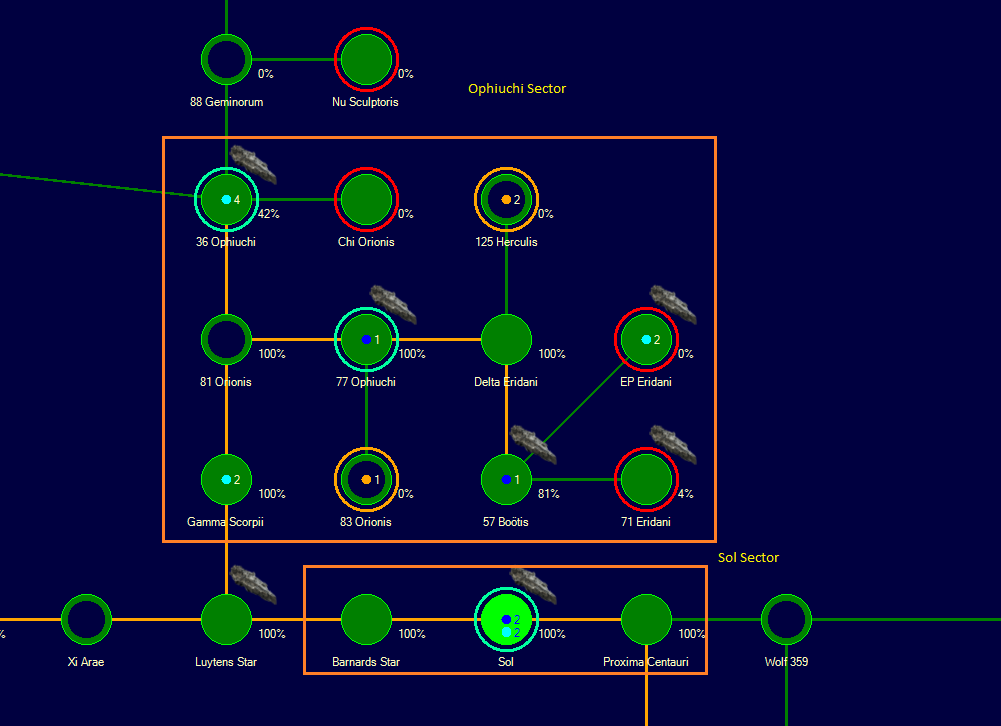I was going to create a topic with basically some version of all the suggestions made here but the search function lead me to add to this old one.
1) The grid should be based on the size of the green system circle. I was going to suggest 110% of that size i.e. two systems placed one grid-point apart would have a gap of 10% the diameter. Most people would probably space systems 2 grid-points apart to allow for the infographic outer circles. Given the 20 and 140 numbers mentioned above, I'm guessing a system circle is 50 diameter with a 20 buffer giving a default 'used' grid size of 70 and a default placement of systems two grid-points apart. This is a little bigger than my off-the-top-of-my-head 110% but perfectly acceptable to me. Note though that it is impossible to place a system midway/halfway between two default placed systems as 20 does not divide 70.
The finer grid spacing allows for more creativity in arranging the map:
I agree db48x, but, it seems highly unlikely anyone would want systems to overlap, so a grid smaller than the diameter of a green system circle is unlikely to be necessary. A person likely might want to place a system midway between and above/below two others suggesting a grid half the size, but the reality of the space necessary to display the information the player will likely want suggests using the even grid-points for major placements and the odd grid-points for half-way. Indeed, Hex-grids like the one you have created in the screen shot you have attached can be approximated using a really simple algorithm: even columns (-2, 0, 2) use even rows (-2, 0, 2) and odd columns (-3, -1, 1, 3) use odd rows (-3, -1, 1, 3)
2+3) Geo-survey status and grav-survey status are shown in completely different ways, and grav-survey info is shown multiple times. Currently a partially surveyed system shows a percentage number (that never goes away) for the geo-survey status, a red circle if the grav-survey is incomplete, an additional orange circle if jump points have been found and remain unexplored and an orange dot with the number of unexplored jump points. I suggest showing the geo- and grav- status as a counter-clockwise decreasing coloured arc proportional to what is remaining to be done. Zero system bodies geo-surveyed show a complete (red?) circle. 42% geo-survey complete, show an arc from 12 to 7 (210°). Similar for grav-survey status: zero done complete (orange?) circle, 17 of 30 points surveyed a 156° arc. The orange dot with number for unexplored jump points.
4) Jump point stabilization status. It would be nice if when you stabilize one side of a jump point, half of the line (from the system with the stabilized end to the centre point) on the galactic map turns orange (maybe with an arrow head?).
5) Ctrl-click on a system on the galaxy map to go to the system map for that system. Ctrl-click on the galaxy map icon to go to the galaxy map with the current system highlighted (rather than Sol).




